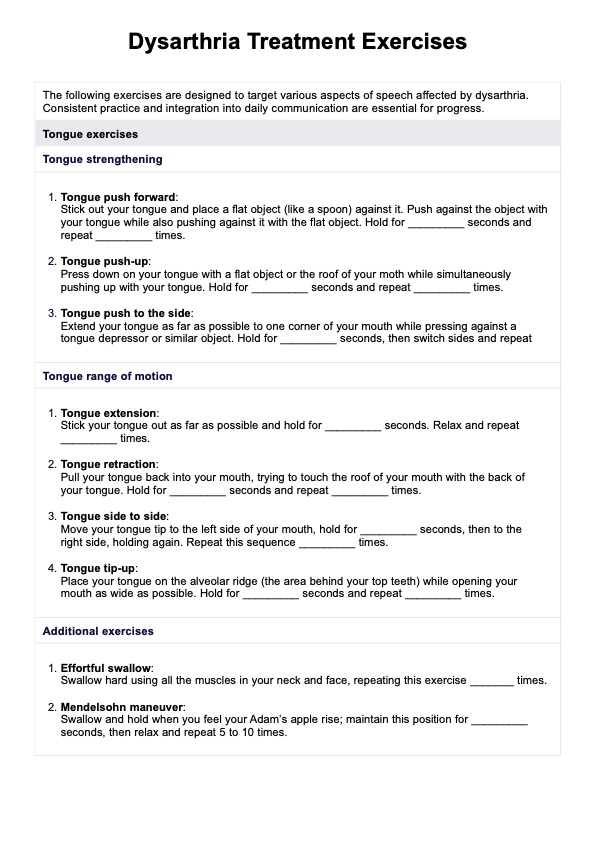Improving dysarthria typically involves working with a speech-language pathologist (SLP) who can provide tailored exercises to strengthen speech muscles, enhance articulation, improve breath control, and teach strategies for clearer communication.

Dysarthria Treatment Exercises
Discover effective dysarthria exercises to improve speech clarity. Download our free guide for tailored speech therapy techniques.
Dysarthria Treatment Exercises Template
Commonly asked questions
The best therapy for dysarthria is often individualized speech-language therapy, which may include articulation exercises, breath support training, and augmentative and alternative communication (AAC) methods, depending on the severity and underlying cause of the condition.
At home, individuals with dysarthria can practice specific oral-motor exercises to strengthen their speech muscles, utilize techniques to slow down their speech rate, and incorporate breathing exercises to improve voice volume; however, the guidance of speech-language pathologist (SLP) is vital for faster progress, since an SLP knows the most effective strategies for specific challenges.
EHR and practice management software
Get started for free
*No credit card required
Free
$0/usd
Unlimited clients
Telehealth
1GB of storage
Client portal text
Automated billing and online payments











